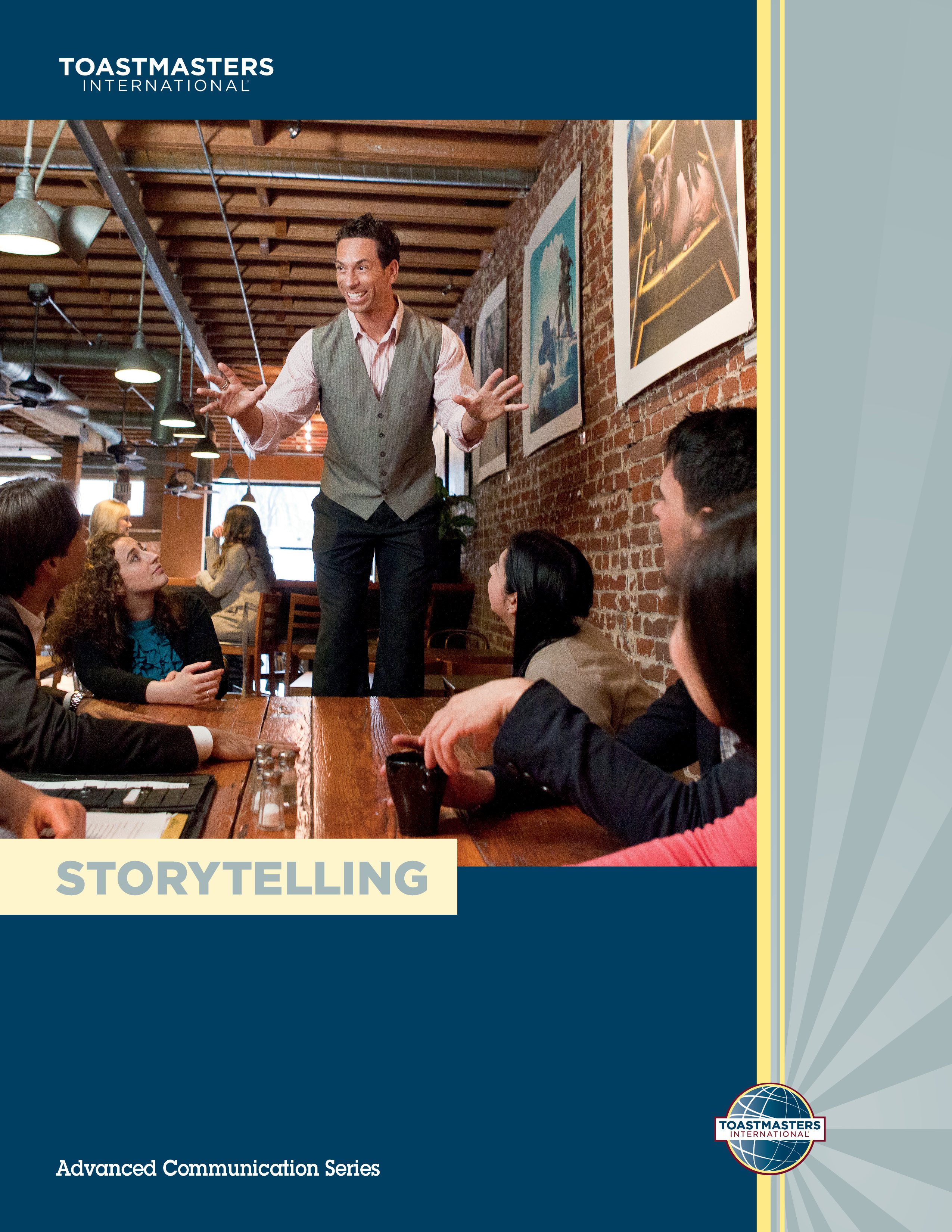Project #1: The Folk Tale
Executive Summary:
Folk tales are popular and easy to tell. Read the story and analyze its structure. What is the plot? How does the action flow? Where is the climax? Why is the story appealing? Become familiar with the scenes and characters and help your audience visualize them. Learn the story so thoroughly that you can tell it from memory. Use gestures and your voice to add impact to the story, paying careful attention to tempo, rhythm, inflection, pauses, and volume.
Objectives:
- To tell a folk tale that is entertaining and enjoyable for a specific age group.
- To use vivid imagery and voice to enhance the tale.
- TIME : 7 to 9 minutes
The purpose of this talk was for the speaker to tell, not read, a folk tale. The speaker should not act out the story, but instead interpret it for the audience, using voice and imagery. It is suggested you read the entire project before the presentation.
Project #2: Let's Get Personal
Executive Summary:
Storytellers often create and tell their own stories. Use your own experiences and observations to build a story that will entertain listeners. Outline the story, paying close attention to plot, setting, characters and conflict. Then fill in dialogue and description. Strive for images so real that everyone can see them. Personalize the story and keep it short. Use natural gestures and body movements.
Objectives:
- To learn the elements of a good story.
- To create and tell an original story based on a personal experience.
- TIME : 6 to 8 minutes
For this project, the speaker was to create and tell a story based on a personal experience without using a script or notes. The speaker was to use vivid descriptions and dialogue to bring the story to life. It is suggested you read the speech project before the presentation.
Project #3: The Moral Of The Story
Executive Summary:
Every story should offer some lessons or insight into live and human nature. Use stories with lessons to illustrate points in your own speeches. You can quote the stories of others, or make up your own. A story with a lesson or moral should have a simple plot and simple characters and the topic should be something with which people are familiar. The story should have an unexpected and somewhat humorous conclusion.
Objectives:
- To understand that a story can be entertaining yet display moral values.
- To create a new story that offers a lesson or moral.
- To tell the story, using the skills developed in the previous two projects.
- TIME : 4 to 6 minutes
The speaker had two options for this project: Create and tell an original story with a lesson or take a lesson from another story and create a new story to go with it. The story was to be entertaining and have a surprise twist to the ending, and the speaker was not to use a script or notes when telling the story. It is suggested you read the project before the presentation.
Project #4: The Touching Story
Executive Summary:
Storytellers want their audiences to feel emotions, whether it be love, hate, anger, happiness, hope or courage. Experiencing emotions involves your listeners in the story, keeps their attention and helps them to remember it. Use dialogue or descriptions to covey the emotions you want the audience to feel. The secret to arousing emotion is to understate it. Don't be obvious or melodramatic.
Objectives:
- To understand the techniques available to arouse emotion.
- To become skilled in arousing emotions while telling a story.
- TIME : 6 to 8 minutes
For this project, the speaker was to prepare and present an original story designed to evoke emotion among listeners, using description and dialogue. The speaker was not to use a script or notes when telling the story. It suggested you read the project before the presentation.
Project #5: Bring History To Life
Executive Summary:
Storytellers have also been historians, using their talents to tell the world about the events that shaped it. Stories about the knights of the Round Table, battles, explorers and leaders are as interesting today as they were many years ago. When telling an historical story, narrow it to one event and make sure it has a plot, conflict, characters, a setting and action. Carefully develop the characters. You may have to cut the story to fit your time limits.
Objectives:
- To understand the purpose of stories about historical events or people.
- To use the storytelling skills developed in the preceding projects to tell a story about a historical event or person.
- TIME : 7 to 9 minutes
The purpose of this talk was for the speaker to tell a story about a historical event or person. The event or person may be mythical, imaginative, fictional, or real. The story should have a plot and character development and should build to a climax. It is suggested you read the project before the presentation.
For more information:
Item 226K

No comments:
Post a Comment